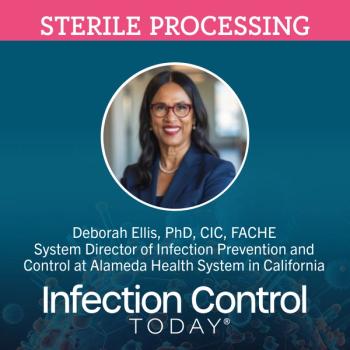
Bacteria Responsible for Bloodstream Infections Growing Less Susceptible to CHG
Bacteria that cause life-threatening bloodstream infections in critically ill patients may be growing increasingly resistant to a common hospital antiseptic, according to a recent study led by investigators at Johns Hopkins. The study was published in the September issue of Infection Control and Hospital Epidemiology.
Chlorhexidine gluconate (CHG) has been increasingly used in hospitals in light of recent evidence that daily antiseptic baths for patients in intensive care units (ICUs) may prevent infections and stop the spread of healthcare-associated infections. The impact of this expanded use on the effectiveness of the disinfectant is not yet known.
“Hospitals are appropriately using chlorhexidine to reduce infections and control the spread of antibiotic-resistant organisms,” said Nuntra Suwantarat, MD, lead author. “However, our findings are a clear signal that we must continue to monitor bacteria for emerging antiseptic resistance as these antibacterial washes become more widely used in hospitals.”
In the study, investigators compared bacterial resistance between cultures from patients in eight ICUs receiving daily antiseptic washes to patients in 30 non-ICUs who did not bathe daily with CHG. Bacterial cultures obtained from patients with regular antiseptic baths showed reduced susceptibility to CHG when compared with those from patients who did not have antiseptic baths. Regardless of unit protocol, 69 percent of all bacteria showed reduced CHG susceptibility, a trend that requires vigilant monitoring.
“The good news is that most bacteria remain vulnerable to CHG, despite the reduced susceptibility. Daily baths with a CHG solution remain effective against life-threatening bloodstream infections,” says Suwantarat.
The investigators caution that the clinical implications of their findings remain unclear. For example, antibiotic susceptibility tests are commonly used to determine whether patients will respond to antibiotic treatment. A similar correlation between antiseptic susceptibility and response to an antiseptic are not as well defined. Identifying particular bacteria and settings in which these bacteria will not respond to antiseptic agents used in hospitals is an important next step.
Reference: Nuntra Suwantarat, Karen C. Carroll, Tsigereda Tekle, Tracy Ross, Lisa L. Maragakis, Sara Cosgrove, Aaron M. Milstone. High Prevalence of Reduced Chlorhexidine Susceptibility in Organisms Causing Central Line-Associated Bloodstream Infections. Infection Control and Hospital Epidemiology [35:9] (September 2014).
Source: Society for Healthcare Epidemiology of America (SHEA)
Newsletter
Stay prepared and protected with Infection Control Today's newsletter, delivering essential updates, best practices, and expert insights for infection preventionists.





